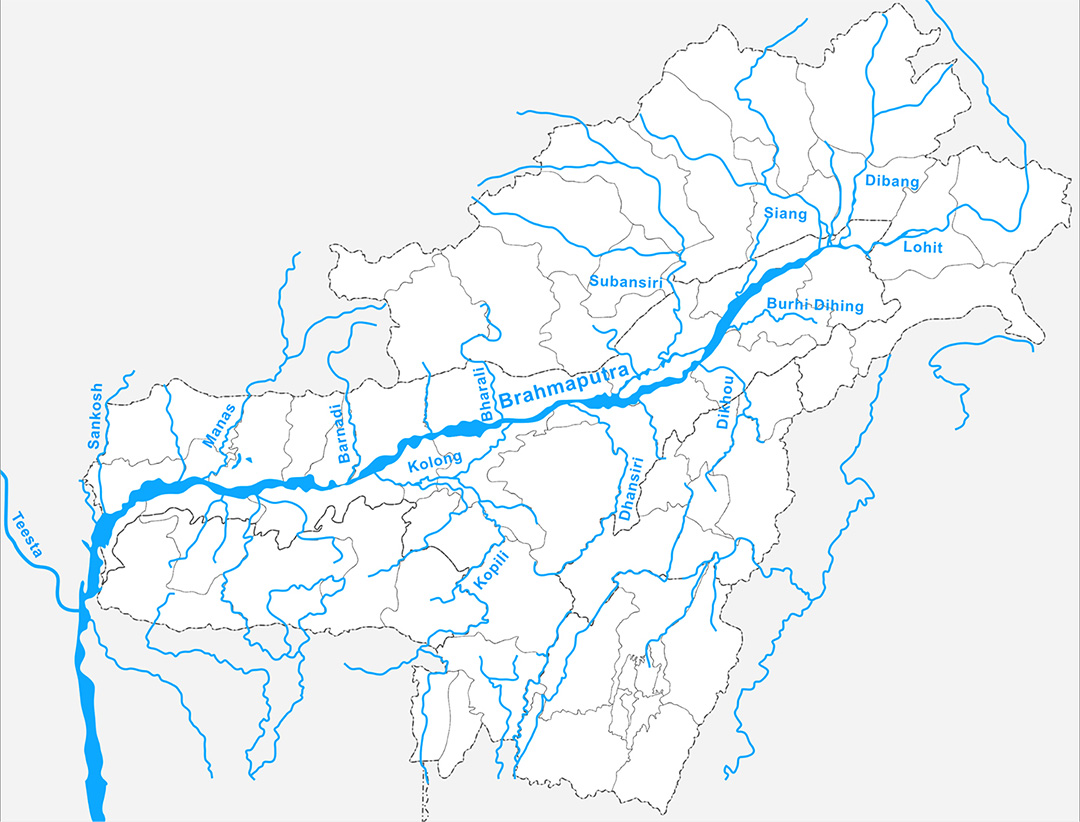Important Facts For Prelims
River Bhogdoi
- 08 Sep 2021
- 3 min read
Why in News
The rampant coal mining in Nagaland, coupled with waste discharge from tea estates and encroachment are contaminating waters of River Bhogdoi in Assam.
- In 2019, the Ministry of Environment, Forest and Climate Change declared Bhogdoi as one of the most polluted rivers in Assam and 351st among the polluted rivers in the country.
Key Points
- About:
- It originates from Mokokchung in Nagaland where it is also known as Tsujenyong nullah and is the south bank tributary of the River Brahmaputra.
- It is an inter-state river (flowing between Assam and Nagaland) and joins Dhansiri river near its confluence with Brahmaputra.
- Issues:
- Coal mining in Nagaland introduced high levels of manganese in the river.
- Chemical waste from the tea gardens is turning the river poisonous and polluted.
- The drains carry industrial and residential wastes. The river has become heavily silted, reducing its carrying capacity.
- The high BOD (Biological Oxygen Demand) indicates low water quality and less oxygen for aquatic life.
- The massive encroachments along the river bank have been not only making the river narrower but also increasing the filth and garbage.
- Disposing human excreta and cremating dead bodies along the river bank are gradually contaminating the soil and water of the region. This is increasing the threat of water-borne diseases.
- Brahmaputra River:
- Brahmaputra River originates under the name of Siang or Dihang, from the Chemayungdung glacier of the Kailash range near the Mansarovar lake (Tibet). It enters India west of Sadiya town in Arunachal Pradesh.
- Tributaries: Dihing River, Dibang River, Lohit River, Dhansiri River, Kolong River, Kameng River, Manas River, Beki River, Raidak River, Jaldhaka River, Teesta River, Subansiri River.
Biochemical Oxygen Demand (BOD)
- Water pollution by organic wastes is measured in terms of BOD.
- BOD is the amount of Dissolved Oxygen (DO) needed by bacteria in decomposing the organic wastes present in water. It is expressed in milligrams of oxygen per litre of water.
- The higher value of BOD indicates low DO content of water.
- Since BOD is limited to biodegradable materials, it is not a reliable method of measuring water pollution.
Chemical Oxygen Demand (COD)
- COD measures the amount of oxygen in parts per million required to oxidise organic (biodegradable and non-biodegradable) and oxidizable inorganic compounds in the water sample.





